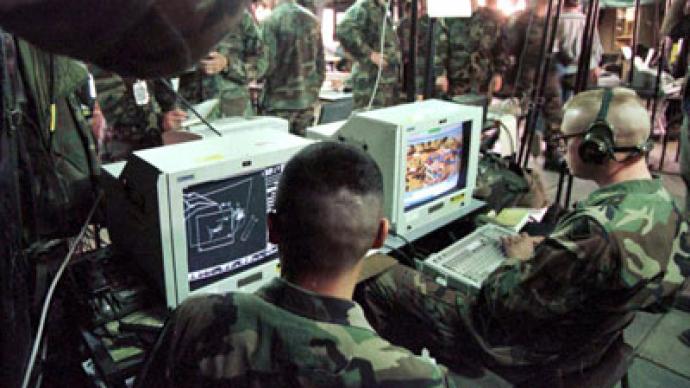DARPA wants to equip soldiers with Android phones for 'Predator vision'

US soldiers may soon be equipped with helmet-mounted cameras that give them infrared and high definition vision, which they can view on their Android smartphones. This new “Predator vision” would help soldiers in darkness, smoke and combat.
The new technology has been developed by the Defense Advanced Research Project Agency (DARPA) and appears promising due to its low cost. For only $3,300 per soldier, the military could be equipped with technology so advanced that it can detect friends and enemies in any weather or visibility condition, night or day. The Pixel Network for Dynamic Visualization program (PIXNET) would provide “battlefield awareness and threat detection and identification,” according to a DARPA press release.Soldiers would strap an Android smartphone to their forearm and a small camera to their helmet. The recordings from the camera would then be transmitted to the phone, allowing the soldier to see advanced images of the battlefield that the human eye alone would not be able to see. DARPA researchers are also planning to add algorithms to the technology that would label all detected humans as friend or enemy.The fusion of gadgets, which have yet to be named, would also link soldiers together and allow them to send their video feeds to each other, thus helping them easily find each other in dangerous combat zones. It would also allow commanders to gain intelligence by studying the various video feeds and understand what is happening on the field.The technology DARPA plans to use already exists, but does not allow soldiers to share information with one another, and are more expensive. Such technology usually cost an average $40,000 a piece.“Through PIXNET, DARPA seeks to fuse the capabilities of these devices into a single multi-band system, thus alleviating physical overburdening of warfighters, and develop a tool that is network-ready, capable of sharing imagery with other warfighters.”The system will also be very small, lightweight and use up little energy.“Success will be measured as the minimization of size, weight, power and cost of the system and the maximization of functionality,” said Nibir Dhar, DARPA program manager for PIXNET.Equipped with Predator vision and modern smartphone technology, soldiers will have to rely less on their natural senses as they become electronically connected to their commanders and fellow soldiers on the battlefield.














